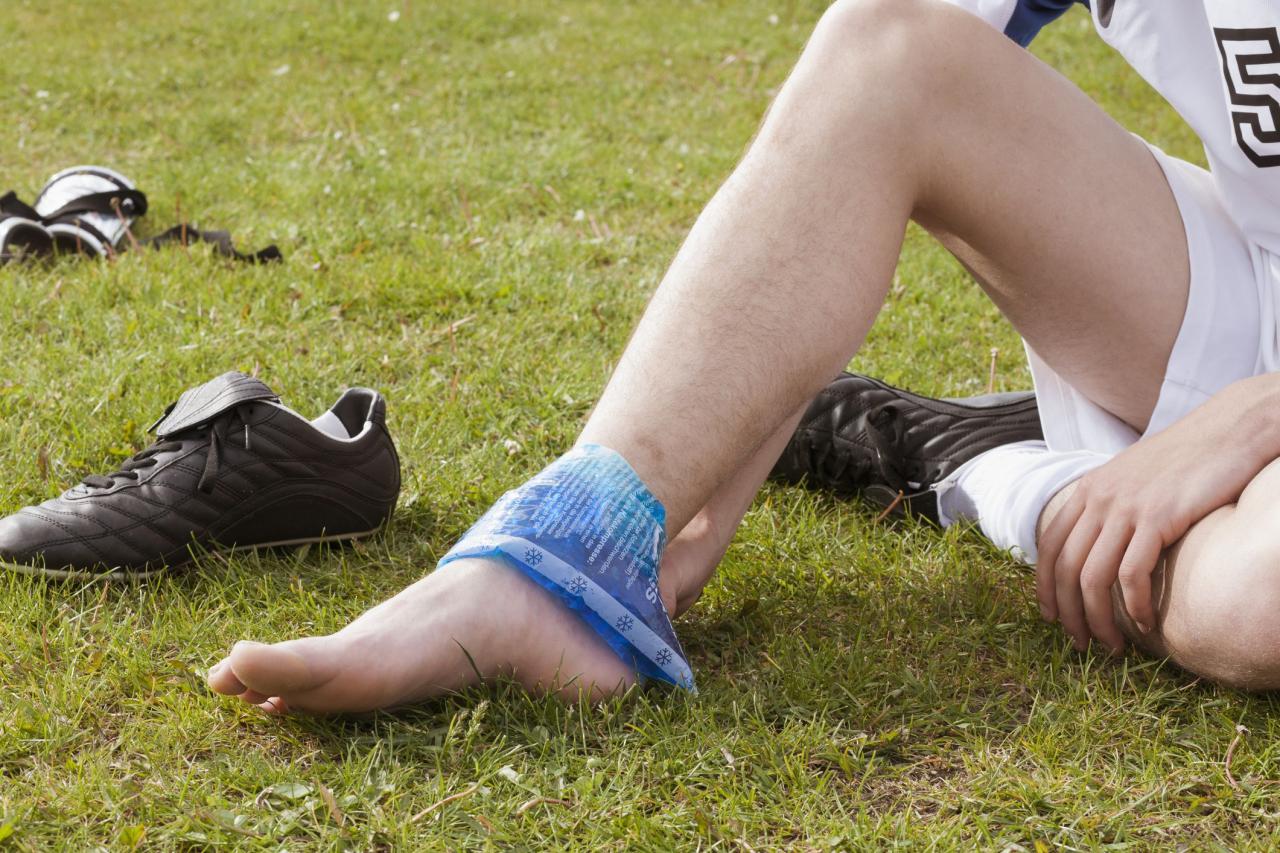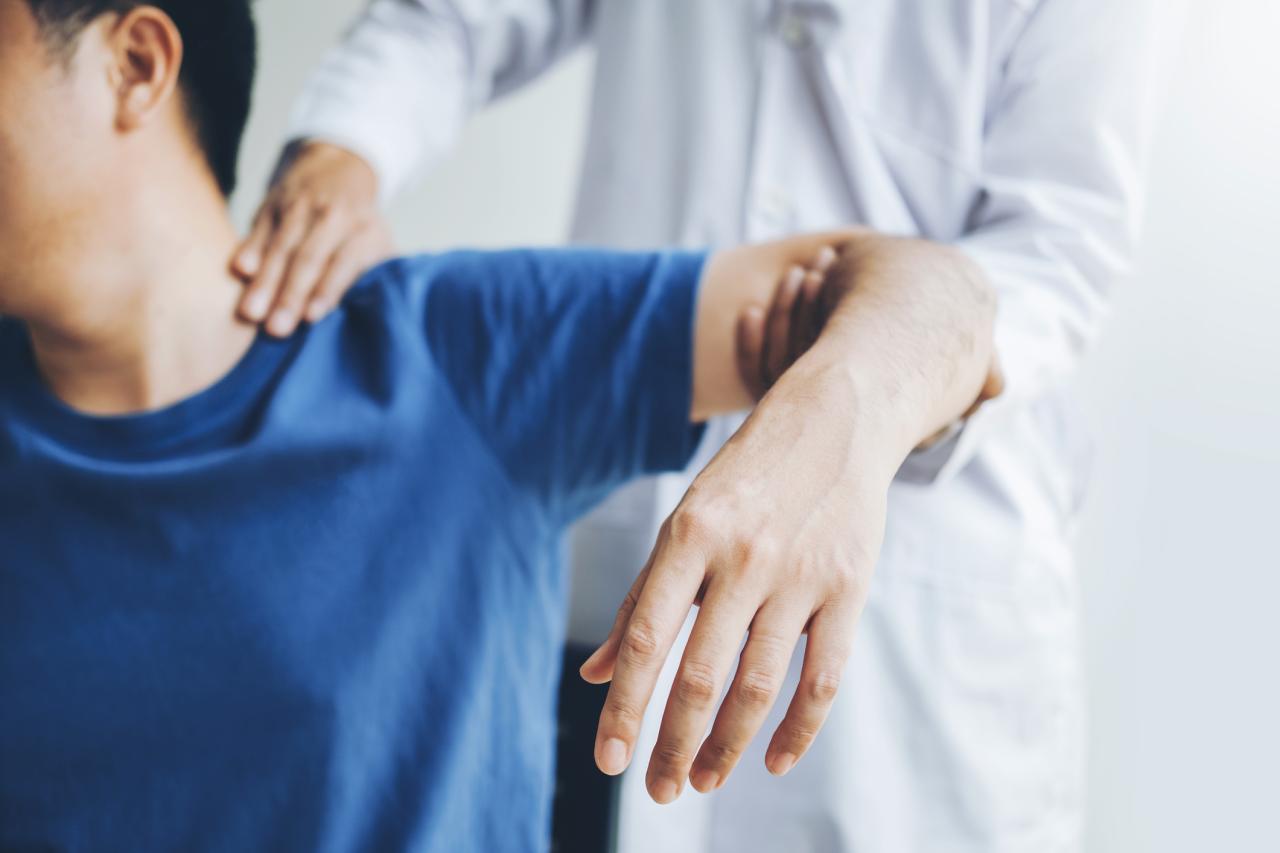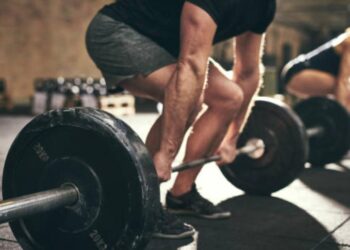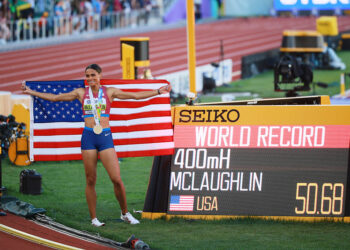In the high-stakes world of professional sports, where the slightest advantage can mean the difference between victory and defeat, an athlete’s physical health is paramount. Injuries, unfortunately, are an inevitable part of this demanding landscape. However, what was once a career-ending setback can now, in many cases, be a temporary hiatus, thanks to astonishing advancements in injury recovery. The past few decades have witnessed a revolution in how sports injuries are diagnosed, treated, and rehabilitated, allowing athletes to return to peak performance faster and safer than ever before. This article delves into the groundbreaking breakthroughs transforming injury recovery, exploring the scientific principles, technological innovations, and holistic approaches that are redefining athletic longevity and success.
The Nature of Sports Injuries

Before exploring recovery breakthroughs, it’s crucial to understand the common types of injuries athletes face. These can range from acute, sudden traumas to chronic conditions that develop over time.
A. Acute Injuries: These occur suddenly, often due to a specific event like a fall, collision, or awkward movement. Examples include:
1. Sprains: Ligament injuries (e.g., ankle sprain, ACL tear).
2. Strains: Muscle or tendon injuries (e.g., hamstring strain, Achilles tendon rupture).
3. Fractures: Bone breaks (e.g., stress fractures, compound fractures).
4. Dislocations: When bones in a joint are forced out of alignment (e.g., shoulder dislocation).
5. Contusions: Bruises caused by direct impact.
B. Overuse Injuries: These develop gradually over time due to repetitive stress on a particular body part, often exacerbated by improper technique, insufficient rest, or rapid increases in training intensity. Examples include:
1. Tendinitis/Tendinopathy: Inflammation or degeneration of a tendon (e.g., patellar tendinitis, rotator cuff tendinopathy).
2. Stress Fractures: Tiny cracks in a bone due to repetitive force.
3. Shin Splints: Pain along the shin bone.
4. Bursitis: Inflammation of a bursa (fluid-filled sacs that cushion joints).
5. Compartment Syndrome: Swelling within a closed muscle compartment.
C. Head Injuries: Particularly concerning in contact sports, these range from concussions to more severe traumatic brain injuries (TBIs). The long-term effects of repeated head trauma are a major focus of current research and prevention efforts.
D. Chronic Pain Conditions: Sometimes, injuries lead to persistent pain that can be debilitating, requiring long-term management strategies. This can include conditions like chronic back pain or arthritic changes post-injury.
The Evolution of Diagnosis
Accurate and rapid diagnosis is the cornerstone of effective injury recovery. The days of relying solely on physical examination are largely over, replaced by a sophisticated arsenal of imaging and diagnostic tools.
A. Advanced Imaging Techniques:
1. MRI (Magnetic Resonance Imaging): Unrivaled for soft tissue injuries (ligaments, tendons, cartilage), MRI provides detailed images that can detect even subtle tears or inflammation not visible on X-rays. Its non-invasive nature and ability to show different tissue types make it indispensable.
2. CT Scans (Computed Tomography): Excellent for bone injuries, complex fractures, and detecting internal bleeding. While involving radiation, its speed and 3D reconstruction capabilities are valuable in acute trauma.
3. Ultrasound: A portable and non-invasive tool, particularly useful for dynamic assessment of muscles and tendons, guiding injections, and detecting fluid collections. It allows real-time visualization of tissue movement.
4. X-rays: Still the first line of defense for suspected bone fractures and dislocations, offering quick and cost-effective visualization of bone structures.
5. PET Scans (Positron Emission Tomography): While less common for routine sports injuries, PET scans can be used in specific cases to detect metabolic activity, helping identify stress reactions or chronic inflammatory conditions that might not show up on other scans.
B. Biomechanical Analysis: High-speed cameras, force plates, and motion capture technology are used to analyze an athlete’s movement patterns. This helps identify compensatory movements, gait abnormalities, or underlying biomechanical flaws that may have contributed to the injury or could hinder recovery. This data-driven approach allows for highly personalized rehabilitation plans.
C. Blood Tests and Biomarkers: Emerging research is exploring blood biomarkers that could indicate tissue damage, inflammation levels, or even predict recovery times. While not yet mainstream for all injuries, this area holds promise for future diagnostic and prognostic tools. For example, specific protein markers might indicate the severity of muscle damage.
Revolutionary Treatment Modalities
The traditional RICE protocol (Rest, Ice, Compression, Elevation) remains foundational for acute injury management, but modern treatment extends far beyond it, incorporating cutting-edge therapies aimed at accelerating healing and restoring function.
A. Biologics and Regenerative Medicine:
1. PRP (Platelet-Rich Plasma): Involves drawing an athlete’s blood, concentrating the platelets (which contain growth factors), and injecting the concentrated plasma into the injured area. These growth factors are believed to stimulate tissue repair and reduce inflammation.
2. Stem Cell Therapy: While still largely experimental and highly regulated, some clinics offer stem cell injections (often derived from the patient’s bone marrow or fat) to promote tissue regeneration in severe tendon or cartilage injuries. Research is ongoing, but the potential is immense.
3. Prolotherapy: Involves injecting a mild irritant solution (like dextrose) into ligaments or tendons to stimulate an inflammatory response, thereby promoting healing and strengthening weakened connective tissues. It’s often used for chronic pain and joint instability.
4. Amniotic and Placental Tissue Products: These contain growth factors, cytokines, and other bioactive molecules that can support tissue repair and reduce inflammation. They are being explored for various musculoskeletal conditions.
B. Advanced Surgical Techniques:
1. Arthroscopy: Minimally invasive surgery using small incisions and a tiny camera. It allows surgeons to repair ligaments, cartilage, and other joint structures with less trauma, resulting in faster recovery times and reduced scarring compared to open surgery. This is now standard for many knee, shoulder, and ankle procedures.
2. Robotic-Assisted Surgery: Robots can assist surgeons with precise movements and enhanced visualization, potentially leading to even greater accuracy in complex procedures like joint replacements or spinal surgeries. This technology is still evolving but shows great promise.
3. Internal Brace Procedures: For ligament repairs (e.g., ACL), new techniques sometimes involve using an “internal brace” – a synthetic tape augmentation that provides immediate support to the repaired ligament, allowing for earlier weight-bearing and potentially faster return to sport.
4. Cartilage Repair and Restoration: Techniques like microfracture, osteochondral autograft transplantation (OATS), and autologous chondrocyte implantation (ACI) aim to repair or regenerate damaged cartilage, which is notoriously difficult to heal naturally.
C. Pharmacological Innovations:
1. Targeted Anti-inflammatories: Beyond traditional NSAIDs, research is exploring more specific anti-inflammatory drugs that can reduce swelling and pain without significant systemic side effects.
2. Pain Management Strategies: A multi-modal approach to pain, including nerve blocks, topical analgesics, and in some cases, responsible use of opioids or non-opioid alternatives, helps manage discomfort throughout the recovery process. The focus is on minimizing reliance on addictive substances.
3. Growth Hormone and Peptides: While controversial and often banned in competitive sports due to performance-enhancing properties, some research is exploring specific peptides or growth hormone fragments for their potential to accelerate tissue healing in a controlled medical setting for non-competitive individuals or in therapeutic contexts.
The Rehabilitation Revolution

Rehabilitation is no longer just about regaining strength; it’s a highly individualized, science-backed process focused on restoring full function, preventing re-injury, and optimizing performance.
A. Personalized Rehabilitation Programs: No two injuries or athletes are alike. Programs are tailored based on the specific injury, the athlete’s sport, their pre-injury fitness level, and individual biomechanics. This involves a detailed assessment by a team of specialists.
B. Early Mobilization: Contrary to old beliefs, prolonged immobilization can hinder healing. Controlled, early mobilization (as appropriate for the injury) promotes blood flow, reduces stiffness, and helps guide tissue regeneration along functional lines. This requires careful supervision by a physical therapist.
C. Proprioceptive and Neuromuscular Training: This focuses on retraining the body’s sense of position and movement (proprioception) and improving the communication between the brain and muscles. It’s crucial for restoring balance, coordination, and agility, especially after joint injuries. Examples include wobble boards, single-leg stands, and reactive drills.
D. Plyometrics and Sport-Specific Training: As healing progresses, rehabilitation incorporates exercises that mimic the demands of the athlete’s specific sport. Plyometrics (explosive movements) build power, while sport-specific drills re-establish muscle memory and movement patterns required for competition. This is often done under the supervision of a strength and conditioning coach.
E. Hydrotherapy: Exercising in water reduces the impact on joints while providing resistance, allowing athletes to begin weight-bearing and movement earlier in the recovery process. It’s particularly beneficial for lower limb injuries and reduces pain.
F. Blood Flow Restriction (BFR) Training: Using cuffs to restrict blood flow to a limb during low-load exercises, BFR can induce muscle hypertrophy and strength gains similar to heavy lifting, which is invaluable when high-load training is not yet possible. This allows for earlier strength gains without putting excessive stress on healing tissues.
G. Wearable Technology and Biometric Monitoring: GPS trackers, heart rate monitors, and other wearables provide real-time data on an athlete’s workload, recovery status, and physiological responses during rehabilitation. This allows clinicians to adjust programs dynamically, preventing overtraining or under-training. Analyzing sleep patterns, heart rate variability, and training load helps optimize recovery.
The Multidisciplinary Approach
Successful injury recovery in elite sports is rarely the work of a single individual. It’s a highly coordinated effort involving a diverse team of specialists.
A. Sports Medicine Physicians: Oversee the entire recovery process, making diagnoses, ordering tests, administering treatments (including injections), and guiding return-to-play decisions. They are the primary medical lead.
B. Orthopedic Surgeons: Perform surgical repairs when necessary, from reconstructive procedures to minimally invasive interventions. Their expertise in surgical techniques is critical for severe injuries.
C. Physical Therapists/Physiotherapists: Design and implement individualized rehabilitation programs, guiding athletes through exercises, manual therapy, and movement re-education. They are on the front lines of restoring function.
D. Athletic Trainers: Often the first responders to injuries, they provide immediate care, help with bracing and taping, and assist with daily rehabilitation exercises, bridging the gap between the medical team and the field.
E. Strength and Conditioning Coaches: Integrate rehabilitation with performance training, ensuring the athlete regains strength, power, and endurance necessary for their sport, and reducing the risk of re-injury. They focus on the physical readiness for competition.
F. Sports Psychologists: Address the mental and emotional toll of injury. They help athletes cope with frustration, fear of re-injury, and loss of identity, providing strategies for mental resilience and positive visualization. The psychological aspect of recovery is often underestimated but critically important.
G. Nutritionists/Dietitians: Develop tailored dietary plans to support tissue healing, reduce inflammation, and maintain optimal body composition during recovery, ensuring the athlete’s body has the necessary building blocks for repair.
H. Chiropractors/Osteopaths: Can address musculoskeletal imbalances and spinal alignment issues that may contribute to or hinder recovery from injuries, focusing on the body’s overall structural integrity.
I. Massage Therapists/Myofascial Release Practitioners: Aid in muscle recovery, reduce soreness, improve circulation, and release tight fascial tissues, complementing physical therapy efforts.
Preventing Re-Injury
Returning an athlete to competition is only half the battle; preventing re-injury is equally, if not more, important for long-term success.
A. Gradual Return to Play Protocols: Athletes do not immediately jump back into full competition. They follow structured, progressive protocols that gradually increase workload, intensity, and sport-specific demands, ensuring the injured area is robust enough to withstand competitive stress. This involves clearance from the medical team at each stage.
B. Ongoing Strength and Conditioning: Even after returning to play, athletes continue with targeted strength and conditioning to maintain muscle balance, joint stability, and overall physical readiness, often with a greater focus on injury prevention exercises. This becomes a permanent part of their training regimen.
C. Biomechanical Corrections: If initial injury analysis revealed underlying biomechanical flaws, ongoing work is done to correct these issues through specific exercises, footwear modifications, or orthotics, reducing the risk of recurrence.
D. Load Management: Advanced analytics track an athlete’s training load, game minutes, and travel, helping coaching and medical staff identify periods of high risk for injury and adjust schedules accordingly. Preventing overtraining is crucial.
E. Recovery Strategies: Emphasizing active recovery, proper sleep, nutrition, and stress management helps athletes’ bodies recuperate from daily demands, reducing cumulative fatigue that can lead to injury.
F. Equipment and Safety Innovations: Advances in protective gear, playing surfaces, and rule changes also contribute significantly to injury prevention, particularly in high-contact sports. For instance, better helmet technology in football or improved padding in hockey.
The Future of Injury Recovery
The field of sports medicine is continually evolving, with exciting prospects on the horizon that promise even faster and more effective recovery.
A. Precision Medicine and Genomics: Tailoring treatments based on an individual’s genetic makeup could revolutionize recovery. Genetic predispositions to certain injuries or responses to treatments might allow for highly personalized preventive and rehabilitation strategies. Pharmacogenomics could guide optimal drug selection.
B. Advanced Biomaterials and Bio-Scaffolds: Development of new biodegradable materials that can act as scaffolds for tissue regeneration, guiding the growth of new ligaments, tendons, or cartilage, could transform surgical outcomes. Imagine custom-printed tissue replacements.
C. Artificial Intelligence and Machine Learning: AI algorithms could analyze vast amounts of data (imaging, biomechanics, physiological markers) to predict injury risk, optimize rehabilitation protocols, and personalize treatment plans with unprecedented accuracy. AI could also assist in real-time injury detection.
D. Tele-rehabilitation: The use of virtual reality (VR) and augmented reality (AR) for remote rehabilitation sessions could make specialized care more accessible, allowing athletes to continue their recovery programs even when traveling or away from their primary medical team. VR could create immersive, gamified rehabilitation experiences.
E. Nanotechnology: In the distant future, nanotechnology might enable targeted drug delivery at the cellular level or the development of miniature robots that can perform repairs within the body with incredible precision.
F. Enhanced Monitoring and Predictive Analytics: Even more sophisticated wearables and sensors will provide continuous, real-time data on tissue health, fatigue levels, and early signs of injury risk, allowing for proactive interventions before a full-blown injury occurs.
Conclusion
The revolution in injury recovery has fundamentally reshaped the landscape of professional sports. What was once a daunting, often career-ending journey has become a meticulously managed process, driven by scientific innovation, technological prowess, and a truly multidisciplinary approach. From precise diagnostics to regenerative therapies, personalized rehabilitation, and robust prevention strategies, every facet of injury management has seen remarkable advancements.
These breakthroughs not only reduce the physical and emotional toll on athletes but also extend careers, enhance performance, and ultimately, elevate the quality and excitement of sports for fans worldwide. The future promises even more incredible innovations, ensuring that athletes can continue to push the boundaries of human potential, confident in the ever-evolving ability to heal, adapt, and return stronger than ever. The resilience of the human body, coupled with scientific ingenuity, ensures a perpetually brighter outlook for those who face the crucible of sports injuries.












